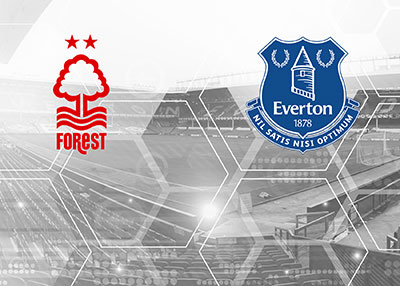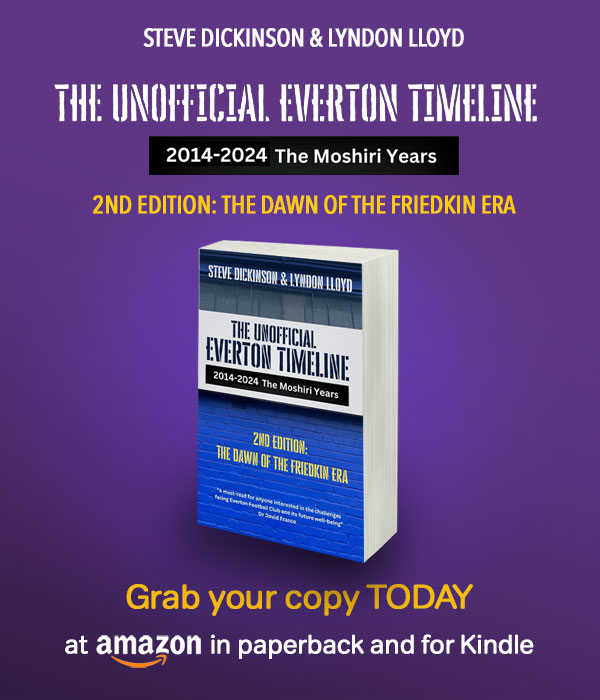Part I of this feature has apparently run its course, so I will continue with Part II.
Bolton Wanderers
Formed as Christ Church, 1874, Bolton Wanderers, 1877
Ground: Burnden Park.
What a club! Dark Days, fights for existence, a Football League club from the inception of that combination in 1888, five times relegated to Division 2, yet never down for longer than two seasons and only seven in all.
Twelve times in the FA Cup Semi-Finals, twice Finalists before the First World War only to lose both, at Everton to Notts County in 1894, and to Manchester City at the Crystal Palace in 1904, both by one goal. Then to Wembley Stadium in 1923 before that huge mass of people, crowd mixing with the players, in that memorable game against West Ham United, and to win the Cup for the first time.
Two more successful visits to Wembley in 1926 and 1929 to play Manchester City and then Portsmouth, and then a long spell until that extraordinary game with Blackpool in 1953, when a winning Bolton were first handicapped by an injury, and then mesmerized by the wizardry of Stanley Matthews, and to lose that most exciting match by three goals to four.
Finally another visit to Wembley Stadium in 1958, when they defeated Manchester United (following the Munich disaster), with a team which did not include a single player costing a transfer fee. Such is the synopsis of the Wanderers' career since 1888.
The club started as a Sunday School organization in 1874 under the name of Christ Church. The committee and the vicar did not see eye to eye, so they had to leave the church premises, and having no home they were certainly 'wanderers', and so Bolton Wanderers came into being in 1877.
In 1878 they were founder members of the Lancashire Football Association, playing at Pike's Lane until 1895, when they moved to Burnden Park which was opened on 17 August with a match against Preston North End.
An incident occurred on this ground in November 1883 which threatened to put an end to the club. The referee was "Hooted on the ground" and afterwards he was assaulted by certain unruly persons; the FA recommended that the club be expelled from football, but the County FA, who dealt with the case, adopted a more lenient view, so the Wanderers survived.
The struggle for the legalization of professionalism brought Bolton to the fore, by chicanery they fooled the members of an investigation commission, but later they admitted the fact and confessed that they had wrongfully paid their players. The outcome was that, in 1885 professionalism was recognized.
Although four times Cup winners, the Wanderers have never occupied either of the top two places in the League; they have been third four times, but the last occasion was in 1925. Six times between 1887 and 1927 they won the Lancashire Cup, a competition which they first entered in 1879.
Burnden Park is club property and so is the land nearby, it has been gradually improved as the club's finances have been strengthened, but it can still do with more covered accommodation, its record attendance is 69,912 established in 1933 against Manchester City.
Of its famous players, who are many, these have been outstanding: David Jack, Ted Vizard, Jimmy Seddon, Don Howe, and more recently Nat Lofthouse, Malcolm Barrass, and Stan Hansen.
Burnley
Formed as Burnley Rovers 1881, Burnley 1882.
Ground: Turf Moor.
Though then a Rugby area, boys connected with the local YMCA decided to play association football, and in 1881 they formed themselves into Burnley Rovers, and adopted the town name in 1882. Nearby was Accrington, and many good players, these with teams from Darwen and Clitheroe, came to Turf Moor and taught the Burnley lads the finer arts of the game the hard way. As one old player said long ago "Goals were so easily scored against us, we were thankful that records were not kept!"
But despite many financial troubles, a good side was got together, mainly through imported Scottish players; these were paid 'sub rosa', with the result that Burnley was amongst the cubs which were outlawed before professionalism was legalized.
By 1888, the club was considered sufficiently capable of meeting the best, and it was made one of the original members of the Football League. It retained its place in Division 1 until 1897, when it was relegated, but only for one season, for it was at the top of Division 2. Two seasons in Division 1 and it was down again for thirteen seasons, being promoted in 1913.
It stayed in Division 1 until 1930, and after the First World War it had three seasons of great success, being second in 1920, League Champions in 1921 and third in 1922. Losing ground, it was in Division 2 from 1931 to 1947, when it once more joined the higher ranks, reaching third place in 1948.
In Cup competitions, the foundations were laid in matches for the Lancashire Cup, which it won first in 1890, then in 1915, and more recently in 1950 and 1952.
In the FA Cup, where it really started its career in 1888-89, by beating Old Westministers and West Bromwich, it reached the last eight in 1898, then in 1913 it was in the semi-final, losing to Sunderland in a replay.
Its great day came in April 1914 at Crystal Palace, with Liverpool as opponents in an all-Lancashire Cup Final, honoured by the presence of KIng George V, wearing a red rose in his buttonhole. Bert Freeman decided the issue that day, just after half-time and, for the first time in football history, TW Boyle captain of Burnley, had the honour of being presented to the King, setting a precedent.
Semi-finalists in 1924 and 1935, they came to Wembley in 1947 presenting an iron curtain to Charlton Athletic, until Duffy got in a winning shot, and Burnley had to be satisfied with runners-up medals after extra time,
Turf Moor is a good example of a northern ground, rather on the 'dour' side. In 1922, it held 40,919 people for the match with Blackburn Rovers but the record was made in 1924 for the match with Huddersfield Town when 54,775 were there.
Old-timers tell of Claude Lambie and Jock Abram, but later generations remember Edgar Chadwick, Jerry Dawson, and Joe Kelly. One of Burnley's outstanding players was Chas E Sutcliffe, later President of the Football League.
Derby County
Formed: 1884
Ground: Baseball Ground.
Football in or around Derby goes back to the beginnings of the game in this country, when Shrove Tuesday was the great day for football. Indeed, the term a "derby match" is an everyday expression to denote a game between local rivals, and is a reminder of the folk-football played in the town for centuries.
The original Derbyshire County FC was an offshoot of the Derbyshire County Cricket Club playing on the Racecourse. It was deliberately formed in 1884 by local enthusiasts as a first-rate team to challenge the best clubs in the north.
From its very beginning, well-known players have been proud to be among the "Rams", and before the days of League football, it had made its mark with such men as B W Spilsbury, Haydn Morely, George Bakewell, and several who had learned the game at Repton School.
Selected as one of the twelve clubs to form the Football League in 1888, it remained in Division 1 until 1907, being once in second place and twice third, although it had two narrow escapes in the early days. From 1908 to 1912 it was in Division 2 when it gained promotion, but went down in 1914 for one season heading Division 2 in the 1914-15 season.
It was in Division 1 until 1921, then for five seasons it was in Division 2, then from 1927 to 1953 it was a First Division club being second twice and third once in the table. But the black overcame the white of its colours in 1953, relegated to Division 2, it had two bad seasons and in 1955, for the first time in its history, it descended to Division 3 [North]. After two seasons, their promotion was gained to Division 2.
In Cup-ties the fable of the 'gypsies curse' seemed to operate, and its lifting in 1946 ended a spell which had apparently affected the club since 1885. By 1894, the last eight was reached and the semi-final in 1896. In 1898, County reached Crystal Palace for its first Cup Final, having beaten Aston Villa, Wolverhampton, Liverpool, and Everton, but Nottingham Forest won 3-1.
Next year, the 'Rams' were back having disposed of Arsenal, Wolves, Southampton, and Stoke, yet Sheffield United were the victors. A third visit was made in 1903, following success over Small Heath, Backburn Rovers, Stoke, and Millwall, but Bury defeated them 6-0 which is still the Cup Final record score.
So the story went, until having been semi-finalists eleven times, Wembley set the scene in 1946 with Charlton Athletic in opposition. Luton, West Bromwich, Brighton, Aston Villa, and Birmingham had been beaten in that season of aggregate, Turner scored goals for both sides, the ball burst, and extra time was needed. What a final, then the hoodoo was raised, the magic of Carter and Doherty worked and Derby County won 4-1 in the extra time. County reached the semi-final again in 1948 losing 3-1 to Manchester United.
The Baseball Ground has been the club's home since 1895, it is not one of the really big grounds, but in 1936, with Nottingham Forest as Cup visitors, 37,830 were present. This has been exceeded several times since, with 38,063 against Northampton in 1950 and 38,384 for the Birmingham Cup-Tie in 1951.
What can one say of Derby players? John Goodall, Frank Sugg, Wm Storer, the great Steve Bloomer with wages of 2s/6d per week (15 pence in today's currency), Raich Carter and Peter Doherty.
Acknowledgement:
Association Football – The Caxton Publishing Company Ltd, 1960










1 Posted 13/07/2023 at 10:09:52